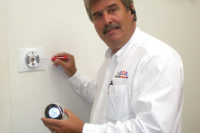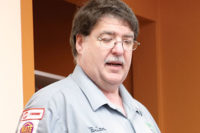As buildings age, energy costs rise, and environmental concerns mount, numerous government agencies at the local, state, and federal level are replacing HVACR equipment in government-owned buildings with more efficient, environmentally friendly equipment. The goal is to decrease energy consumption, reduce pollution and waste, create jobs, and save taxpayers’ money.
But just as important, industry leaders agree that these lead-by-example government initiatives also have the power to shift the HVACR market toward more energy-efficient, environmentally friendly products for homes and buildings nationwide.
The Fed Goes Green
The Alliance to Save Energy (ASE) recently released Energy 2030, a set of policy recommendations designed to double energy productivity by 2030. One of ASE’s recommendations centers on increasing government investment in energy-saving products. Nicole Steele, program manager of policy and research for ASE, said the government’s involvement is crucial to influencing the private sector to follow suit. “By the federal government leading by example, they can shift markets,” Steele said. “Where there wasn’t a demand before, there is a demand now.”
Steele said government agencies — from local municipalities on up to the White House — have a responsibility to not only talk the talk, but to walk the walk.
“It’s being transparent, it’s being a leader, and it’s being innovative and market transformative,” Steele said. “How can the government create policies and ask private business owners and residents to follow policies if the government doesn’t follow them first?”
Steele said the government has already helped cut down energy consumption through lead-by-example initiatives over the years. “If we were using energy at the same consumption rate as we were 30 years ago, we’d be using 50 percent more energy right now.”
Leading the Way
At the local level, Rochester Hills, Mich., Mayor Bryan Barnett is working to make his city’s municipal buildings as energy efficient as possible. His community — an affluent, conservative suburb north of Detroit with a population just over 70,000 — has routinely expressed an interest in sustainability at the ballot box, and Barnett said he feels it’s his duty to follow through.
“We decided to take our stimulus money and lead by example,” Barnett said. “We put a lot of money into our facilities. We changed our temperature control policy and our lighting policy. A lot of our buildings are sensor-based now, and all of our fire stations underwent major HVAC retrofitting.”
Barnett said that, as long as the city has the money to fund it, he’s willing to try just about anything that will improve energy efficiency, cut down on waste and pollution, and save taxpayers’ money.
“We’re spending the residents’ money, so if we can save energy costs, we’re more likely to be able to apply it toward other things,” Barnett said. “To me, that’s important.”
Barnett said several of the HVAC improvements have already paid for themselves in energy savings, adding that the city has saved well over $100,000 in utility costs over the past few years.
“You have to stay aggressive,” Barnett said. “If you don’t, costs will continue to go up.”
Contractor Opportunities
In addition to shifting the market, government lead-by-example projects have created many jobs in the HVAC industry. Dave Kyle, president of Trademasters Service Corp., Lorton, Va., said his company had only “dabbled in government contracting” in the past, but then “ramped it up during the recession.” Now, much of the work Trademasters performs is in Washington, D.C., for federal government agencies.
“We like to go into the older buildings and make them more energy efficient. It’s a total win-win because they end up with new equipment, lighting, and controls, and the energy savings pays for the equipment,” Kyle said. “I’ve seen a return on investment happen very quickly, in a year or two.”
Trademasters recently tackled a Department of Agriculture building that was constructed in the 1920s. “It used steam with radiators under the window units, so we put in a complete variable-refrigerant flow (VRF) system — a couple hundred tons of VRF,” Kyle said. “We’re working on buildings that are 70, 80, and 90 years old, because those agencies aren’t moving.”
Kyle said projects like the Department of Agriculture building are providing proof to the private sector that up-front investments will often save money in the long run. “As the government proves that these things are viable and affordable, they sort of mature the marketplace,” he said.
Still, Kyle said some contractors are missing opportunities to become involved in government projects. “We have learned that the government really needs our help, and they really like good contractors who are forward thinking and will help them embrace some of the new technology.
“I absolutely would encourage my contracting brethren to look at local municipalities, county government, state agencies, and schools for contracting opportunities. You have to realize, they’re not relocating, and they may want to invest.”
To view a nationwide map of lead-by-example initiatives, visit the American Council for an Energy-Efficient Economy (ACEEE) website at http://bit.ly/WZ5LxL.
Publication date: 3/11/2013













